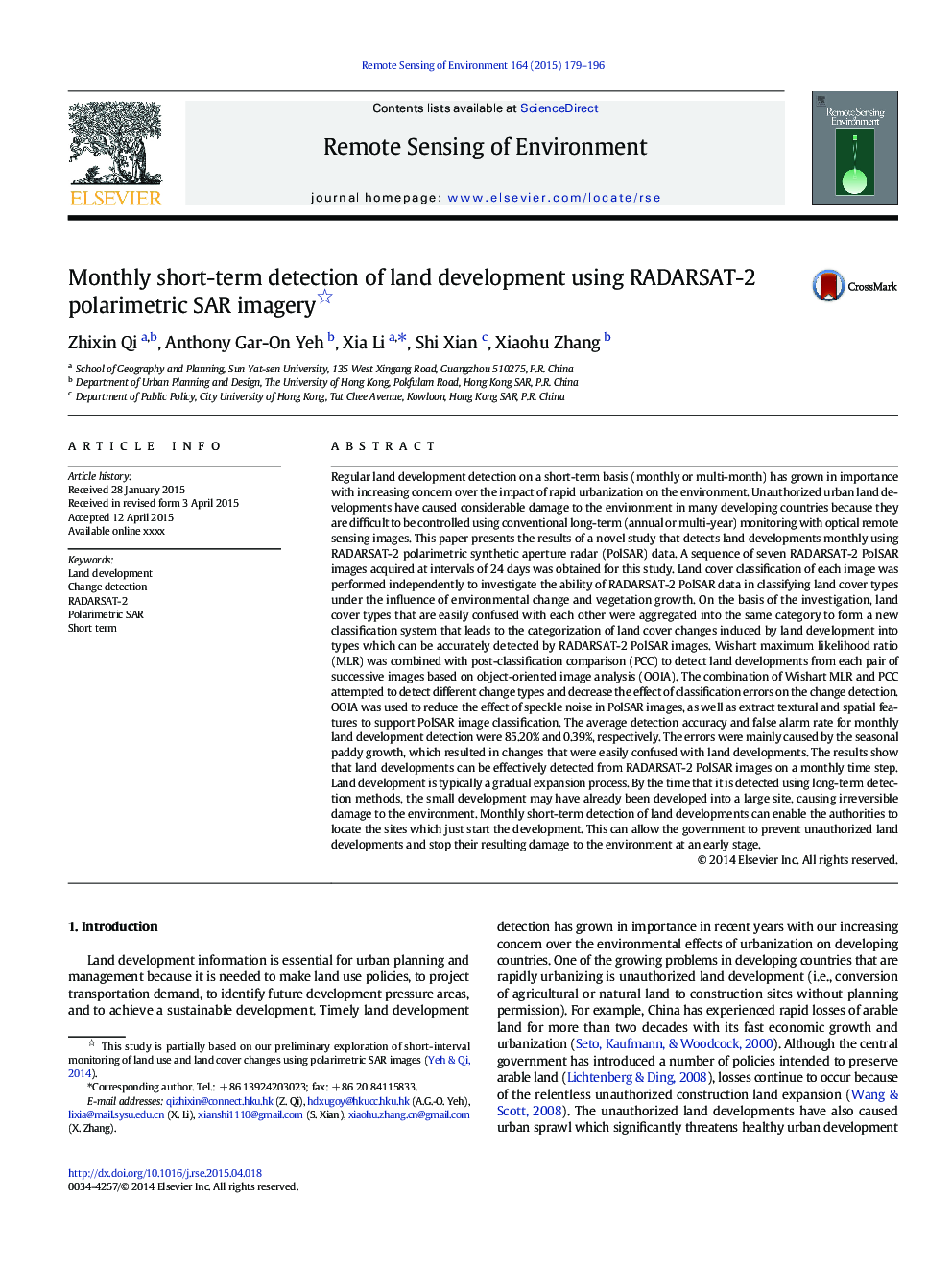| Article ID | Journal | Published Year | Pages | File Type |
|---|---|---|---|---|
| 6346029 | Remote Sensing of Environment | 2015 | 18 Pages |
Abstract
Regular land development detection on a short-term basis (monthly or multi-month) has grown in importance with increasing concern over the impact of rapid urbanization on the environment. Unauthorized urban land developments have caused considerable damage to the environment in many developing countries because they are difficult to be controlled using conventional long-term (annual or multi-year) monitoring with optical remote sensing images. This paper presents the results of a novel study that detects land developments monthly using RADARSAT-2 polarimetric synthetic aperture radar (PolSAR) data. A sequence of seven RADARSAT-2 PolSAR images acquired at intervals of 24 days was obtained for this study. Land cover classification of each image was performed independently to investigate the ability of RADARSAT-2 PolSAR data in classifying land cover types under the influence of environmental change and vegetation growth. On the basis of the investigation, land cover types that are easily confused with each other were aggregated into the same category to form a new classification system that leads to the categorization of land cover changes induced by land development into types which can be accurately detected by RADARSAT-2 PolSAR images. Wishart maximum likelihood ratio (MLR) was combined with post-classification comparison (PCC) to detect land developments from each pair of successive images based on object-oriented image analysis (OOIA). The combination of Wishart MLR and PCC attempted to detect different change types and decrease the effect of classification errors on the change detection. OOIA was used to reduce the effect of speckle noise in PolSAR images, as well as extract textural and spatial features to support PolSAR image classification. The average detection accuracy and false alarm rate for monthly land development detection were 85.20% and 0.39%, respectively. The errors were mainly caused by the seasonal paddy growth, which resulted in changes that were easily confused with land developments. The results show that land developments can be effectively detected from RADARSAT-2 PolSAR images on a monthly time step. Land development is typically a gradual expansion process. By the time that it is detected using long-term detection methods, the small development may have already been developed into a large site, causing irreversible damage to the environment. Monthly short-term detection of land developments can enable the authorities to locate the sites which just start the development. This can allow the government to prevent unauthorized land developments and stop their resulting damage to the environment at an early stage.
Related Topics
Physical Sciences and Engineering
Earth and Planetary Sciences
Computers in Earth Sciences
Authors
Zhixin Qi, Anthony Gar-On Yeh, Xia Li, Shi Xian, Xiaohu Zhang,
